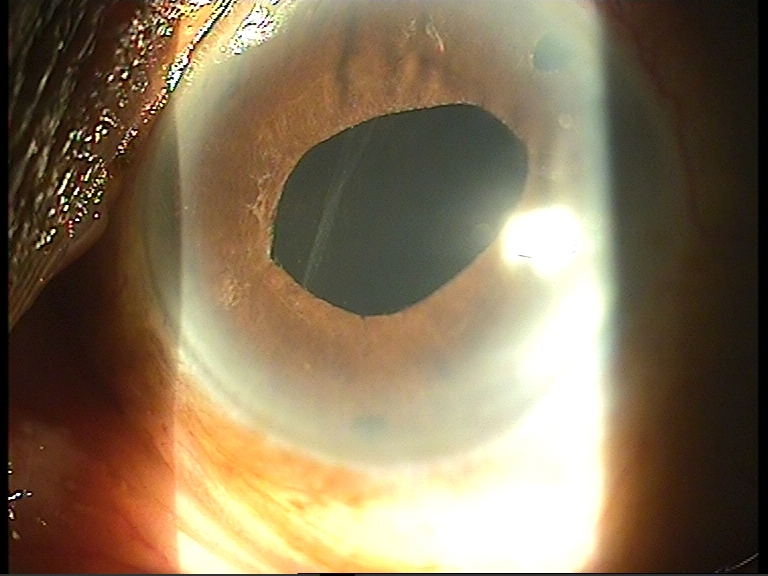Angle closure glaucoma caused by delayed vitreous prolapse into the posterior chamber after phacoemulsification
Keywords:
Delayed vitreous prolapse, posterior capsular rent, pseudoexfoliation, angle closure glaucoma
Abstract
Vitreous in the anterior chamber is a known cause of raised intraocular pressure following cataract surgery. We present a case of delayed intraocular pressure following cataract surgery in a patient with pseudoexfoliation caused by vitreous prolapse into the posterior chamber. Control of intraocular pressure was achieved by an anterior vitrectomy. Prompt recognition and management of this condition is essential for a good outcome.
References
1. Shields MB. Glaucomas following ocular surgery. In: Shields MB (editor) Textbook of glaucoma. Baltimore: Williams and Wilkins; 1998. p. 345-368.
2. Grant WM. Open-Angle Glaucoma Associated with Vitreous Filling the Anterior Chamber. Trans Am Ophthalmol Soc. 1963; 61:196-218.
3. Samples JR, Van Buskirk EM. Open-angle glaucoma associated with vitreous humor filling the anterior chamber. Am J Ophthalmol. 1986;102(6):759-761.
4. Li EY1, Wu WK, Jhanji V. Pupillary block glaucoma secondary to vitreous prolapse after Nd:YAG capsulotomy. Clin Exp Optom. 2011; 94(4):383-384.
5. Shingleton BJ, Heltzer J, O'Donoghue MW. Outcomes of phacoemulsification in patients with and without pseudoexfoliation syndrome. J Cataract Refract Surg. 2003;29(6):1080-1086.
2. Grant WM. Open-Angle Glaucoma Associated with Vitreous Filling the Anterior Chamber. Trans Am Ophthalmol Soc. 1963; 61:196-218.
3. Samples JR, Van Buskirk EM. Open-angle glaucoma associated with vitreous humor filling the anterior chamber. Am J Ophthalmol. 1986;102(6):759-761.
4. Li EY1, Wu WK, Jhanji V. Pupillary block glaucoma secondary to vitreous prolapse after Nd:YAG capsulotomy. Clin Exp Optom. 2011; 94(4):383-384.
5. Shingleton BJ, Heltzer J, O'Donoghue MW. Outcomes of phacoemulsification in patients with and without pseudoexfoliation syndrome. J Cataract Refract Surg. 2003;29(6):1080-1086.

Published
2018-10-23
How to Cite
Rajamani, M., & Ramamurthy, C. (2018). Angle closure glaucoma caused by delayed vitreous prolapse into the posterior chamber after phacoemulsification. Asian Journal of Ophthalmology, 16(1), 19-22. https://doi.org/10.35119/asjoo.v16i1.335
Issue
Section
Case Reports/Case Series
Copyright (c) 2018 Asian Journal of Ophthalmology

This work is licensed under a Creative Commons Attribution 4.0 International License.
Authors who publish with this journal agree to the following terms:
- Authors retain copyright and grant the journal right of first publication, with the work twelve (12) months after publication simultaneously licensed under a Creative Commons Attribution License that allows others to share the work with an acknowledgement of the work's authorship and initial publication in this journal.
- Authors are able to enter into separate, additional contractual arrangements for the non-exclusive distribution of the journal's published version of the work (e.g., post it to an institutional repository or publish it in a book), with an acknowledgement of its initial publication in this journal.
- Authors are permitted and encouraged to post their work online (e.g., in institutional repositories or on their website) prior to and during the submission process, as it can lead to productive exchanges, as well as earlier and greater citation of published work (See The Effect of Open Access).


